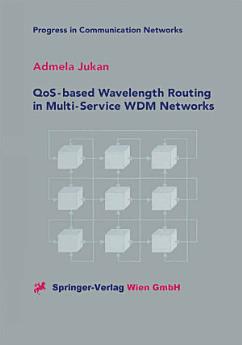QoS-based Wavelength Routing in Multi-Service WDM Networks
Dec 2012 · Springer Science & Business Media
Ebook
244
Pages
reportRatings and reviews aren’t verified Learn More
About this ebook
The need to establish wavelength-routed connections in a service-differentiated fash ion is becoming increasingly important due to a variety of candidate client networks (e. g. IP, SDH/SONET, ATM) and the requirements for Quality-of-Service (QoS) de livery within transport layers. Up until now, the criteria for optical network design and operation have usually been considered independently of the higher-layer client signals (users), i. e. without taking into account particular requirements or constraints originating from the users' differentiation. Wavelength routing for multi-service net works with performance guarantees, however, will have to do with much more than finding a path and allocating wavelengths. The optimisation of wavelength-routed paths will have to take into account a number of user requirements and network con straints, while keeping the resource utilisation and blocking probability as low as pos sible. In a networking scenario where a multi-service operation in WDM networks is assumed, while dealing with heterogeneous architectures (e. g. technology-driven, as transparent, or regenerative), efficient algorithms and protocols for QoS-differentiated and dynamic allocation of physical resources will playa key role. This work examines the development of multi-criteria wavelength routing for WDM networks where a set of performances is guaranteed to each client network, taking into account network properties and physical constraints.
Rate this ebook
Tell us what you think.
Reading information
Smartphones and tablets
Install the Google Play Books app for Android and iPad/iPhone. It syncs automatically with your account and allows you to read online or offline wherever you are.
Laptops and computers
You can listen to audiobooks purchased on Google Play using your computer's web browser.
eReaders and other devices
To read on e-ink devices like Kobo eReaders, you'll need to download a file and transfer it to your device. Follow the detailed Help Center instructions to transfer the files to supported eReaders.




